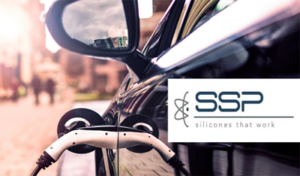Specialty Silicone Products explains EMI shielding for electric vehicles
Ball Spa, NY – Electric vehicles (EVs) are susceptible to electromagnetic interference (EMI) because they put significant amounts of electrical and electronic content into confined spaces. The radiated and conductive emissions from these systems can disrupt circuits and result in conditions that range from minor inconveniences to dangerous losses of vehicle function. Without proper EMI shielding, performance and safety can suffer.
In a new white paper, Specialty Silicone Products (SSP) explains what engineers need to know about protecting EVs from EMI. SSP, a global provider of conductive elastomers for EMI gaskets, examines the sources of EMI for all types of electric vehicles and explains how, when, where and why to use particle-filled silicones. Moreover, SSP describes cost-effective but high-performing alternatives to silver filled materials.
SSP’s new white paper also describes solutions to related challenges. For example, the EMI O-rings in EVs require proper compression, reliable high-temperature resistance, and efficient fabrication. Molded EMI O-rings don’t require bonding, but they cost more and have higher tooling costs and lead times. With the right bonded O-rings, however, the EV industry can control costs and optimize performance.
For engineers who work with EV batteries, flame resistance is also imperative. Engineers want EMI gasket materials that meet UL 94 V-0 flammability requirements, but two trusted materials from W.L. Gore are no longer available. Fortunately, engineers now have new alternatives – and ones that are supported by third-party test data. Battery engineers can also find EMI shielding that resists galvanic corrosion.

